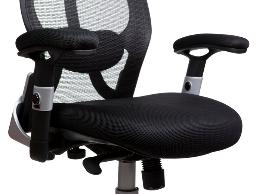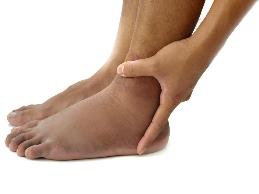On This Page
About Leg Impairment
Leg impairments can arise from injuries, cancer, arthritis, diabetes, burns, and other conditions. They can be isolated to the leg or exist as a part of another condition. Limitations most often affect walking and can be painful.
Leg Impairment and the Americans with Disabilities Act
The ADA does not contain a definitive list of medical conditions that constitute disabilities. Instead, the ADA defines a person with a disability as someone who (1) has a physical or mental impairment that substantially limits one or more "major life activities," (2) has a record of such an impairment, or (3) is regarded as having such an impairment. For more information about how to determine whether a person has a disability under the ADA, see How to Determine Whether a Person Has a Disability under the Americans with Disabilities Act Amendments Act (ADAAA).
Accommodating Employees with Leg Impairment
People with limitations from a leg impairment may develop some of the limitations discussed below, but seldom develop all of them. Also, the degree of limitation will vary among individuals. Be aware that not all people with leg impairments will need accommodations to perform their jobs and many others may only need a few accommodations. The following is only a sample of the possibilities available. Numerous other accommodation solutions may exist.
Questions to Consider:
- What limitations is the employee experiencing?
- How do these limitations affect the employee and the employee’s job performance?
- What specific job tasks are problematic as a result of these limitations?
- What accommodations are available to reduce or eliminate these problems? Are all possible resources being used to determine possible accommodations?
- Once accommodations are in place, would it be useful to meet with the employee to evaluate the effectiveness of the accommodations and to determine whether additional accommodations are needed?
- Do supervisory personnel and employees need training?
Key Accommodations
- Limiting lifting, reaching, pushing, and pulling by job restructuring
- Using Proper Lifting Techniques
- Reallocating lifting duties, if marginal
- Providing assistance moving objects, to reduce weight
- Organizing items in a way that reduces the need to move or lift items
- Reducing weight to be lifted by separating items into smaller groups
- Reassigning an employee to a modified duty position or modifying duties by removing the lifting duties
Accommodation Ideas:
Situations and Solutions:
The following situations and solutions are real-life examples of accommodations that were made by JAN customers. Because accommodations are made on a case-by-case basis, these examples may not be effective for every workplace but give you an idea about the types of accommodations that are possible.
JAN Publications & Articles Regarding Leg Impairment
Publications
Consultants' Corner Articles
- A Support Person as an Accommodation
- Accommodations for Housekeeping/Janitorial Workers with Motor Impairments
- Accommodations Related to Commuting To and From Work
- Best Practices for Addressing Requests for Ergonomic Chairs
- Confidentiality of Medical Information under the ADA
- Hidden Disabilities: Confidentiality and Travel
Related Disabilities
Articles
- No Articles available for Leg Impairment
Blog Posts
- No Blog Posts available for Leg Impairment










